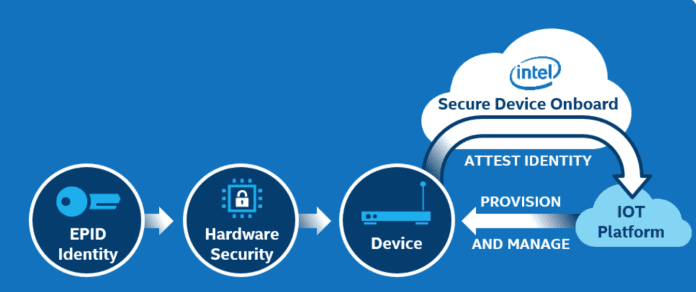Intel launches Secure Device Onboard service during IoT Solution World Congress
Regardless of where you get your projections, they all agree that the internet of things (IoT) will quickly grow to comprise multiple billions of devices, everything from smart home lighting and AI assistants to industrial sensors focused on predictive maintenance, lowering energy consumption and all around creating process efficiencies that save time and money. In that connected world, easily onboarding devices in a manner that’s secure and reliable will be imperative to achieving scale and deriving value from the fast-moving space.
Intel is looking to address this need with its new Secure Device Onboard (SDO) service, launched this week at IoT Solutions World Congress in Barcelona, Spain. From a blog post by Intel’s Rick Echevarria, vice president and general manager of Intel Platforms Security Division: “Shipping default credentials, error-prone human authentication of headless devices, and potentially vulnerable software updates represent fundamental risks to IoT that grow the surface area available for attacks…That is why the IoT industry needs to automate security and leverage the protections that hardware can deliver. Given the sheer volume of IoT devices…security automation is essential to turning the tide.”
Here’s how it works. In 2008 Intel put out its Enhanced Privacy ID (EPID), which leverages cryptography software to authenticate a device onto an internet of things platform. The tech was opened up and standardized by the Trusted Computing Group, and some 2.7 EPID-equipped processors have shipped. From there, Intel worked with partners to broaden the reach to platform beyond just those sold by Intel. “Using our toolkits, Echevarria wrote, “…and our cross-platform onboarding service, ecosystem partners can enable any device to onboard to any IoT platform in a single session, as opposed to a one-off configuration for each platform method.”
To that open, ecosystem-approach, Intel worked with ARM microcontroller providers–Microchip, Infineon and Cypress–to embed the EPID to expand the reach of automated onboarding. In terms of platform support, Microsoft’s Azure integrated the SDO technology into its IoT Hub Device Provisioning Services “which helps improve security in the industry,” Sam George, Partner Director, Azure Internet of Things, said

